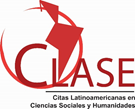Integración de las Tics al proceso de enseñanza-aprendizaje de la Matemática en las carreras de ingeniería
Resumen
Este trabajo tiene como objetivo, fundamentar beneficios del uso de una estrategia que adapta y utiliza dos metodologías de enseñanza: STEAM y CORDIS, para lograr una adecuada integración de las TICs al proceso de enseñanza-aprendizaje de la Disciplina Matemática en carreras de ingeniería, de manera que utilice el enfoque científico interdisciplinar de STEAM con el enfoque humanista CORDIS. Teorías que sirven de sustento a este trabajo, tienen su origen en la psicología sociocultural vigotskyana, el enfoque psicogenético piagetiano, la teoría de esquemas cognitivos y la teoría ausubeliana de la asimilación y el aprendizaje significativo.
La estrategia didáctica fue aplicada a diferentes grupos de ingeniería de la Universidad de Cienfuegos, mientras que en dos grupos de control no fue aplicada. Se utilizaron pruebas de inferencia estadística y estrategias de análisis de conglomerados en la conformación de grupos homogéneos, para contrastar el uso de la estrategia didáctica con la evaluación obtenida por los estudiantes. Los resultados mostraron, que la estrategia didáctica presentó significación estadística con respecto a las evaluaciones obtenidas y que los conglomerados de estudiantes con alto aprovechamiento en el uso de las TIC, presentaron mejores evaluaciones que el resto.
Palabras clave:
TICs, enseñanza-aprendizaje, estrategia didáctica, STEAM, CORDIS.
ABSTRACT
This work aims to prove benefits of the use of a didactic strategy that uses two teaching methodologies: STEAM and CORDIS, to achieve an adequate integration of ICT to the teaching-learning process of the Mathematical Discipline in engineering careers, so that use the scientific approach of STEAM with the humanistic CORDIS approach. Theories that serve as the basis for this work have their origin in Vigotskyan sociocultural psychology, the Piagetian psychogenetic approach, the theory of cognitive schemes and the ausubelian theory of assimilation and meaningful learning. The didactic strategy was applied to different engineering groups from the University of Cienfuegos, while it was not applied to two control groups. Statistical inference tests and cluster analysis strategies were used in the formation of homogeneous groups to contrast the use of the didactic strategy with the evaluation obtained by the students. The results showed that the didactic strategy presented statistical significance with respect to the evaluations obtained and that the conglomerates of students with high achievement in the use of ICT presented better evaluations than the rest.Keywords:
TICs, teaching-learning, didactic strategy, STEAM, CORDIS.Descargas
Descargas
Publicado
Cómo citar
Número
Sección
Licencia
La editorial "Universo Sur", de la Universidad de Cienfuegos, publica el contenido de la Revista "Conrado" bajo una Licencia Creative Commons Atribución-NoComercial-SinDerivar 4.0 Internacional.
© Podrá reproducirse y socializarse, de forma parcial o total, el contenido de esta publicación, sin fines comerciales, siempre que se haga de forma literal y se mencione la fuente.







